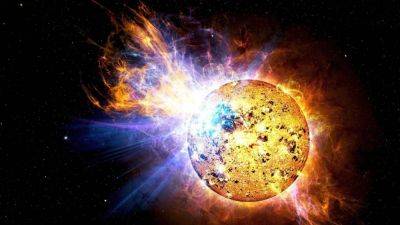The solar activity on Earth has intensified. Yesterday, December 1, it was reported that a second coronal mass ejection (CME) was headed for the Earth which could turn the ongoing solar storm even more intense, and exactly that happened. A few hours earlier, the second CME made an impact and sparked an incredibly powerful G3-class solar storm. The storm resulted in some of the brightest aurora displays seen across the world. While it has begun subsiding slowly, a NASA model has shown that more CMEs are headed toward the Earth and might make contact with our magnetosphere before the end of the day.
Earth-directed solar flares can erupt soon, detects NASA SDO; aurora-sparking solar storms possible
14.11.2023 - 08:47 / tech.hindustantimes.com
The Sun has turned volatile and its activity is expected to increase further as the peak of solar cycle 25 comes closer. The current solar cycle has already exceeded expectations, with more number of sunspots already seen than predicted. Earth could be in line to face CMEs, solar flares, solar storms, and other particles with potentially disastrous consequences in the coming weeks and months.
In a new development, NASA's Solar Dynamics Observatory (SDO), which carries a full suite of instruments to observe the Sun, has recently revealed that Earth could be in the firing line of a sunspot and dangerous solar flares could be hurled out that could have the potential to wreak havoc.
According to a report by spaceweather.com, NASA's Solar Dynamics Observatory (SDO), forecasts that a region on the Sun's surface, termed Sunspot AR3483, has a “'beta-gamma” magnetic field that could trigger M-class solar flares. While the sunspot is diminishing, it still holds enough power to hurl out flares.
The report states, “Departing sunspot AR3483 has a 'beta-gamma' magnetic field that harbors energy for M-class solar flares”. For the unaware, M-class solar flares have moderate intensity, and have the potential to cause power blackouts as well as radio interferences.
These flares are classified according to their strength on the logarithmic scale, similar to how earthquakes are measured. The smallest ones are A-class which occur at near background levels, followed by B, C, and M, while X-rated flares are the strongest.
Like asteroids, solar flares also pose a threat to Earth. Strong solar flares can cause power and radio blackouts for several hours or even days, spark auroras, give people in airplanes doses of radiation and can even influence elections! Technological instruments are especially at risk during flares. This is because when cosmic rays strike Earth, they release various particles like energetic neutrons, muons, pions and alpha particles. Although these particles do not affect the human body, they also pass through integrated circuits and cause damage, often changing the data stored in the memory.
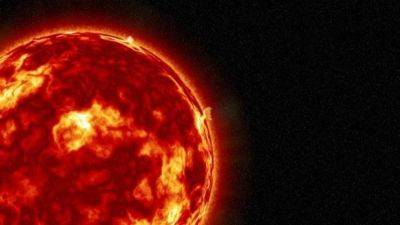
CME strikes Earth, sparks solar storm; but it can get worse, reveals NOAA; here is why
It has been said multiple times that the Sun will pick up solar activity as it ramps up to the peak of its solar cycle, but we are finally witnessing the onset of it. Last month was riddled with solar storms and short-wave radio blackouts triggered by solar flares. Now, things are getting worse. According to the National Oceanic and Atmospheric Administration (NOAA), a coronal mass ejection (CME) hit the Earth a few hours ago and sparked a minor solar storm. While it is not very dangerous, things are going to get worse. The space weather monitoring agency also revealed that another CME is on its way, and it can cannibalize the former to produce a really strong solar storm on Earth later today.
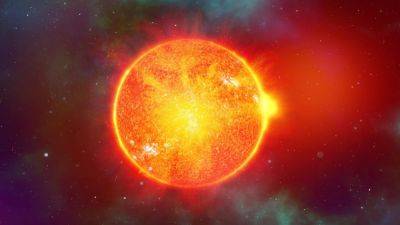
NASA detects CME that can partially hit Earth on Nov 30 and spark solar storm; Auroras expected
On Sunday, a coronal mass ejection (CME) struck the Earth sparking a 15-hour-long solar storm that peaked at G2-class intensity. The impact was so strong that auroras were visible across most of Europe despite it being a moonlit night. As the planet is still recovering from it, NASA models have detected yet another CME that is partially targeting the southern hemisphere of the planet. It can reach the Earth by November 30, and early reports suggest that while the storm is expected to be a minor one, it will still spark auroras at high latitudes.

Sunspots threaten to release a solar storm today directed at Earth
A huge spike in the cases of solar activity has raised concerns among researchers. Sunspots have always been a central point of research for space scientists as they can have a significant effect on our planet. That is why space agencies like ESA and NASA keep an eye on the Sun and solar activity with the help of their advanced instruments.
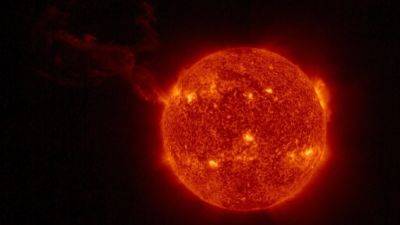
M-class solar flare erupts on the Sun, shows NASA; blackouts triggered on Earth, solar storm possible
Yesterday, a massive sunspot spanning 200,000 kilometers containing as many as 12 dark cores was reported on the Sun. As per information from the NASA Solar Dynamic Observatory (SDO), there was a high chance that it could explode at any moment, and that is exactly what happened just an hour ago. An M-class solar flare was seen erupting on the sunspot, whose extreme ultraviolet radiation sparked a short-wave radio blackout on the Earth. While NASA has not been able to confirm the presence of any Earth-bound coronal mass ejection (CME), this information should be revealed in a few hours' time.

NASA says strong incoming solar winds could spark geomagnetic storm on Earth
The barrage of solar activity continues as we near the peak of solar cycle 25. For the unaware, a solar cycle is an 11-year period where the Sun's activity dips and rises. The lowest point of activity in the cycle is known as the solar minimum, while the period of highest activity is known as the solar maximum. As we approach the solar maximum, Earth is predicted to face more CMEs, sunspots, solar flares, and solar storms.

Against the Storm Leaves Early Access in December
Against the Storm, the dark fantasy city builder developed by Eremite Games, will leave early access on December 8, according to a recently published blog update shared on Steam.
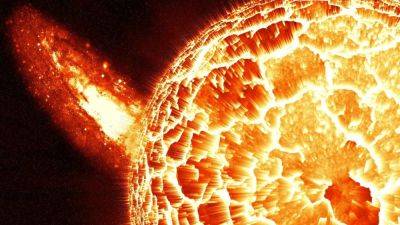
200000 km wide sunspot presents solar flare threat, shows NASA's SDO
The Sun is at the center of our solar system and is essential for life to exist as it provides warmth, without which Earth would've been a frozen and desolate wasteland. However, it also poses a threat to the planet on some occasions. With the peak of the solar cycle 25 nearing, we've already seen numerous CMEs, solar flares, solar storms, and other particles impact the planet. While most of them have left Earth unscathed, a handful of them have caused effects such as radio disturbances, and power grid failures.

Against the Storm Launches December 8th, Releasing Day One on PC Game Pass
Eremite Games’ Against the Storm, a roguelite city-builder, is exiting Steam Early Access on December 8th. It’s also launching day one on PC Game Pass. Check out the announcement trailer, which also explains how the game works.

Mass Effect veteran Mac Walters is leading a new NetEase studio in Canada
NetEase has announced a new game development studio headed up by one of the key writers on the Mass Effect series.

From sparking powerful solar storms to causing forest fires, know the dangers of solar winds
Solar winds have been part of the reason behind the recent series of solar storms that have struck the Earth in the last couple of weeks. They either sparked solar storm incidents or amplified an active storm. But often, we tend to overlook its potential to cause damage when compared to solar flares and coronal mass ejections (CME). However, as per NASA officials and research papers, these stellar winds are capable of not only sparking solar storms but also triggering forest fires, and damaging spacecraft, potentially putting the lives of astronauts in danger.
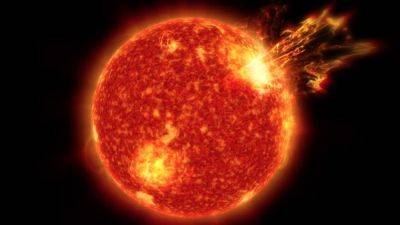
Earth to suffer direct CME hit, new NASA model reveals; To spark solar storm and auroras
Yesterday, the NASA Solar and Heliospheric Observatory (SOHO) detected a coronal mass ejection (CME) that appeared to be coming towards the Earth. The early assessment revealed that it could hit the Earth in the late hours of November 11, although it wasn't clear whether the strike would be a direct one or a glancing blow. Earlier today, NASA ran the data through its prediction model and we have a much clearer picture of what is to come. The CME is now expected to hit the Earth tomorrow, November 12. It is also expected to be a head-on collision, and the solar storm can reach an intensity of G2-class.
